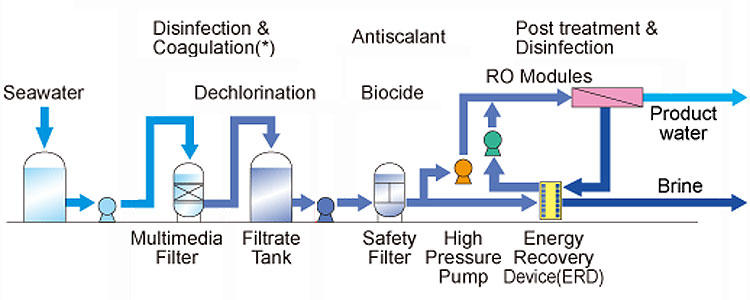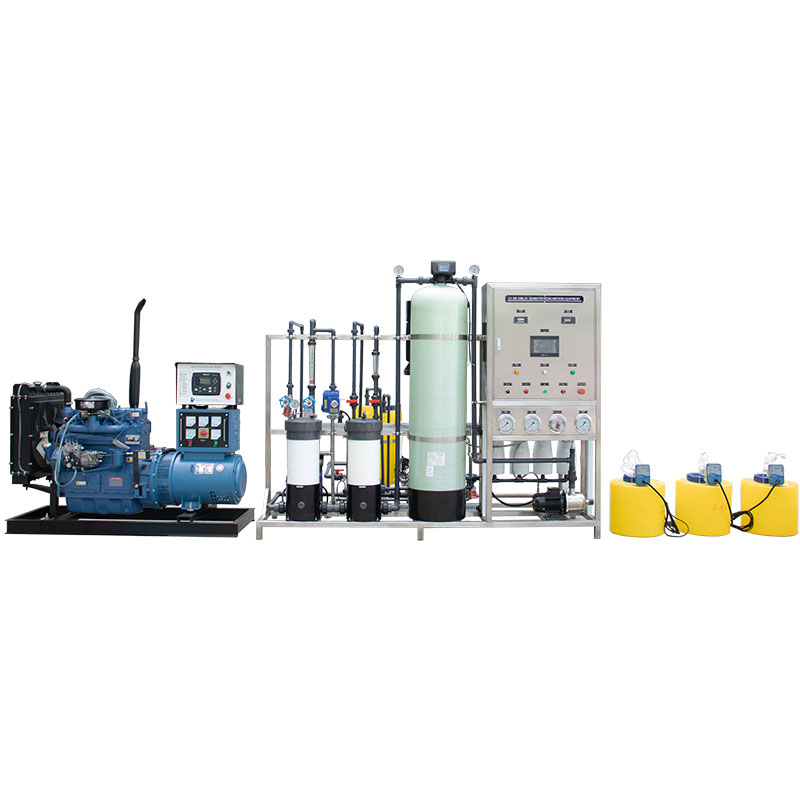What are the advantages and disadvantages of solar desalination equipment?
Against the backdrop of global water shortage and increasing energy crisis, how to efficiently use renewable energy for desalination has become an important research topic. Solar desalination equipment has attracted widespread attention due to its environmental protection and high efficiency.
This article will explore the advantages and disadvantages of solar desalination equipment in depth, analyze its performance in practical applications and future development prospects.

Working principle of solar desalination equipment
Solar desalination equipment mainly drives the desalination process by converting solar energy into heat or electricity. According to the different energy conversion methods, solar desalination technology is mainly divided into two categories:
1. Solar thermal distillation method
Solar thermal distillation method uses solar collectors to heat and evaporate seawater, and the steam is converted into fresh water after condensation. Common solar thermal distillation systems include solar distiller, solar multi-effect distillation (MED) and solar multi-stage flash (MSF) system.
2. Solar photovoltaic reverse osmosis method
Solar photovoltaic reverse osmosis method converts solar energy into electricity through photovoltaic panels to drive the reverse osmosis (RO) system for desalination. The RO system uses a high-pressure pump to pass seawater through a semi-permeable membrane, filter out salt and impurities, and obtain fresh water.
What are the advantages of solar desalination equipment?
1. Renewable energy utilization
Solar energy is a clean and renewable energy source. Using solar energy for desalination can reduce dependence on fossil fuels, reduce carbon emissions, and help alleviate global climate change. Especially in coastal areas with abundant sunshine, solar energy resources are abundant, providing a stable energy guarantee for desalination.
2. Environmental protection and pollution-free
The solar desalination process does not produce harmful gases and wastewater emissions, and is environmentally friendly. Traditional desalination methods, such as coal or fuel oil distillation, not only have high energy consumption, but also emit a large amount of carbon dioxide and other pollutants, while solar desalination completely avoids these problems.
3. Low operating cost
Although the initial investment of solar desalination equipment is high, its operating cost is relatively low. Solar energy resources do not need to be paid, there is almost no energy cost during the operation of the equipment, and the long-term economic benefits are significant. Especially for remote areas and small islands, solar desalination can provide an independent and reliable fresh water supply solution.
4. Strong adaptability
Solar desalination equipment can be modularly designed according to demand, and the system scale can be flexibly adjusted to adapt to different application scenarios. Whether it is a small-scale household water system or a large-scale industrial and municipal water supply system, it can achieve efficient operation.
5. Diversified technology
There are various types of solar desalination technologies, and the most appropriate technical solution can be selected according to specific conditions. For example, in areas with sufficient sunshine and low water quality requirements, solar thermal distillation is an ideal choice; while in areas where efficient desalination is required and electricity demand is large, solar photovoltaic reverse osmosis is more suitable.

What are the disadvantages of solar desalination equipment?
1. High initial investment
The initial construction cost of solar desalination equipment is high, including the purchase and installation of core components such as solar collectors, photovoltaic panels, and high-efficiency reverse osmosis membranes. This is an important constraint for economically underdeveloped areas and projects with limited funds.
2. Dependence on weather conditions
The operating efficiency of solar desalination equipment is greatly affected by weather conditions. On rainy or hazy days, solar energy resources are insufficient, and the desalination efficiency of the equipment will drop significantly. In order to ensure continuous water supply, energy storage devices or backup energy systems are often required, which increases the complexity and cost of the system.
3. System efficiency issues
Although solar desalination technology is constantly improving, its overall efficiency is still relatively low compared to traditional energy-driven desalination systems. In particular, during the solar energy conversion process, energy loss is large, resulting in high energy consumption per unit of water output.
4. High maintenance requirements
Key components in solar desalination equipment, such as solar collectors, photovoltaic panels and reverse osmosis membranes, need to be regularly maintained and replaced to ensure the stable operation of the system. This increases the maintenance cost and technical management requirements of the equipment, especially for areas with weak technical strength, where maintenance work may become a major challenge.
5. Water quality control
When treating high-salinity seawater, solar desalination systems may experience membrane scaling and contamination problems, affecting the desalination effect and equipment life. It is necessary to combine pretreatment technologies, such as sand filtration and activated carbon filtration, to ensure the quality of the incoming water, which increases the complexity and cost of the system.

Actual application cases of solar desalination equipment
1. Solar desalination project in Saudi Arabia
Saudi Arabia is one of the first countries in the world to try solar desalination technology. Its desert region is rich in sunlight resources. By building large-scale solar desalination plants, it has effectively solved the problem of fresh water supply in coastal and inland areas. In 2018, Saudi Arabia launched the world's largest solar desalination project, with an estimated daily processing capacity of 60,000 cubic meters, which greatly alleviated the local water shortage problem.
2. Solar desalination test in Masdar City, UAE
As a demonstration city for sustainable development, Masdar City in the UAE actively explores solar desalination technology. The solar desalination test project in Masdar City provides clean and efficient fresh water supply through the combination of solar photovoltaic and reverse osmosis technology. The project not only demonstrates the actual application effect of solar desalination, but also provides technical reference and experience accumulation for other regions.
3. Solar desalination project in Gujarat, India
Gujarat, India is a dry and rainy area with serious water shortage. The local government provides a stable supply of fresh water for coastal villages by introducing solar desalination technology. The project uses solar distillation technology combined with a small water storage system to solve the drinking water problem of local residents and significantly improve the quality of life.
Conclusion
As an environmentally friendly and efficient water treatment technology, solar desalination equipment has broad application prospects. Despite the challenges of high initial investment and dependence on weather conditions, through technological innovation and system optimization, solar desalination is expected to achieve greater breakthroughs in the future and provide an important means to solve the global water shortage problem.




